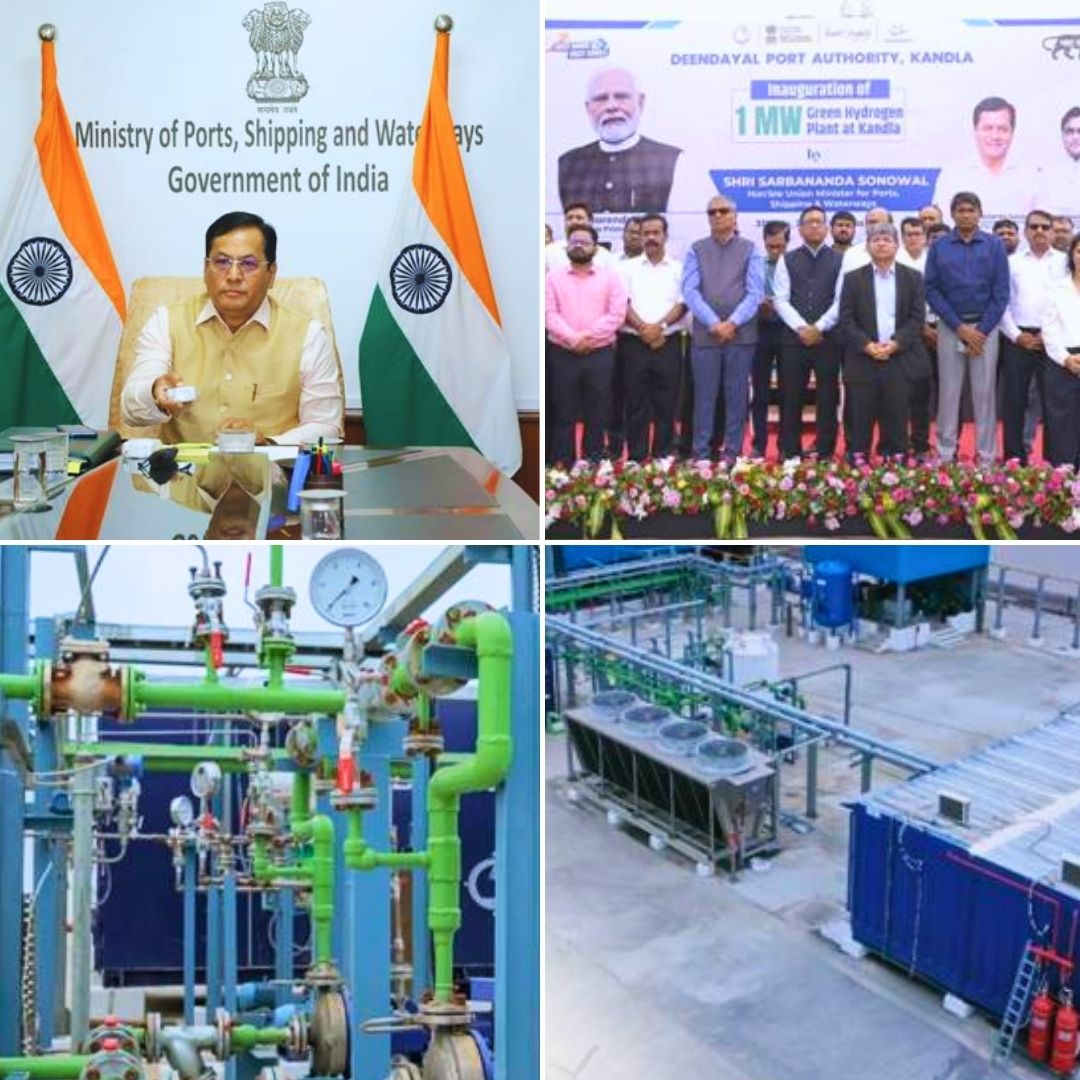On July 31, 2025, Union Minister of Ports, Shipping and Waterways Sarbananda Sonowal inaugurated India’s first Make-in-India 1 MW Green Hydrogen Plant at Deendayal Port Authority (DPA), Kandla, Gujarat. This plant is the initial phase of a larger 10 MW green hydrogen project whose foundation was laid by Prime Minister Narendra Modi in May 2025 during his visit to Bhuj.
The facility is expected to produce about 140 metric tonnes of clean green hydrogen annually, marking a significant advancement in India’s National Green Hydrogen Mission and its ambitious 2030 vision for a cleaner, self-reliant future. Officials lauded the project’s rapid completion within four months, exceptional indigenous engineering by Indian firms such as Larsen & Toubro (L&T), and its crucial role in maritime decarbonisation and sustainable port operations.
Green Hydrogen Initiative: Fast-Tracked Innovation Driving Sustainability at Kandla Port
The inauguration represents more than just a new energy plant — it is a landmark in India’s journey towards green technology leadership. The 1 MW green hydrogen plant is a fully indigenous effort, with the electrolyzer and all key components manufactured in India, embodying the spirit of Aatma-Nirbhar Bharat (self-reliant India).
The plant is poised to supply green hydrogen to power various port operations, including electric vehicles like buses, street lighting, and potentially shipping-related applications, thereby significantly reducing the carbon footprint of the port environment.
Union Minister Sarbananda Sonowal described this achievement as “a shining example of speed, scale, and skill,” praising the DPA and its engineering partner L&T for executing the project with remarkable precision and efficiency in just four months. He emphasised that the commissioning is “a major step” towards meeting India’s Net Zero commitments under the Maritime India Vision 2030 and applauded the alignment with Prime Minister Narendra Modi’s bold leadership and vision for a greener India.
Union Minister of State Shantanu Thakur also hailed the project as a “proud moment” for Gujarat and the nation, recognising it as “a bold and innovative stride towards a sustainable maritime future.” Both ministers underscored the project’s potential to serve as a model for other ports in India, inspiring a swifter adoption of green hydrogen technology across the maritime sector and beyond.
Background: National Green Hydrogen Mission and India’s Broader Sustainable Energy Push
This inaugural plant forms part of the government’s broader National Green Hydrogen Mission, unveiled to catalyse indigenous green hydrogen production and extensive adoption by 2030. The foundation stone for the 10 MW Deendayal Port facility was laid by PM Modi in late May 2025, signalling governmental commitment to fast-track clean energy projects. The mission aims to reduce India’s reliance on fossil fuels, tackle climate change resilience, and enhance energy security.
Kandla Port is already demonstrating a commitment to green maritime infrastructure, having earlier deployed the first Make-in-India all-electric Green Tug. These initiatives collectively highlight India’s evolving strategy of integrating decarbonisation technologies within its port operations, a key sector for pollution due to its logistics and shipping activities.
Complete in just four months, the 1 MW module exemplifies India’s growing capabilities in handling high-technology renewable projects, demonstrating how policy focus, public-private partnerships, and skilled indigenous workforce can produce world-class green technologies swiftly and efficiently.
The Logical Indian’s Perspective
The Logical Indian welcomes this inauguration as a powerful milestone in India’s pursuit of sustainability, clean innovation, and environmental responsibility. Green hydrogen, with its potential to decarbonise sectors that are hard to electrify such as shipping and heavy industry, is vital to India’s and the world’s climate goals. The successful execution of such projects at homegrown scale and speed points to how political will and local expertise can converge to combat climate challenges effectively.
However, the road ahead requires sustained investment, equitable policy support, and public awareness to ensure that technological gains translate into broad societal benefits, particularly in terms of jobs, health, and environmental quality. The clean energy revolution must incorporate inclusivity and fairness alongside innovation.
Deendayal Port Authority (DPA) Commissions India’s First Make-in-India 1 MW Green Hydrogen Plant at Kandla
— PIB India (@PIB_India) July 31, 2025
DPA Becomes First Indian Port to Operate a Megawatt-Scale Green Hydrogen Plant: Union Minister @sarbanandsonwal
Read here: https://t.co/qoJ7fN3nIZ pic.twitter.com/MOc5Uu3AeJ












